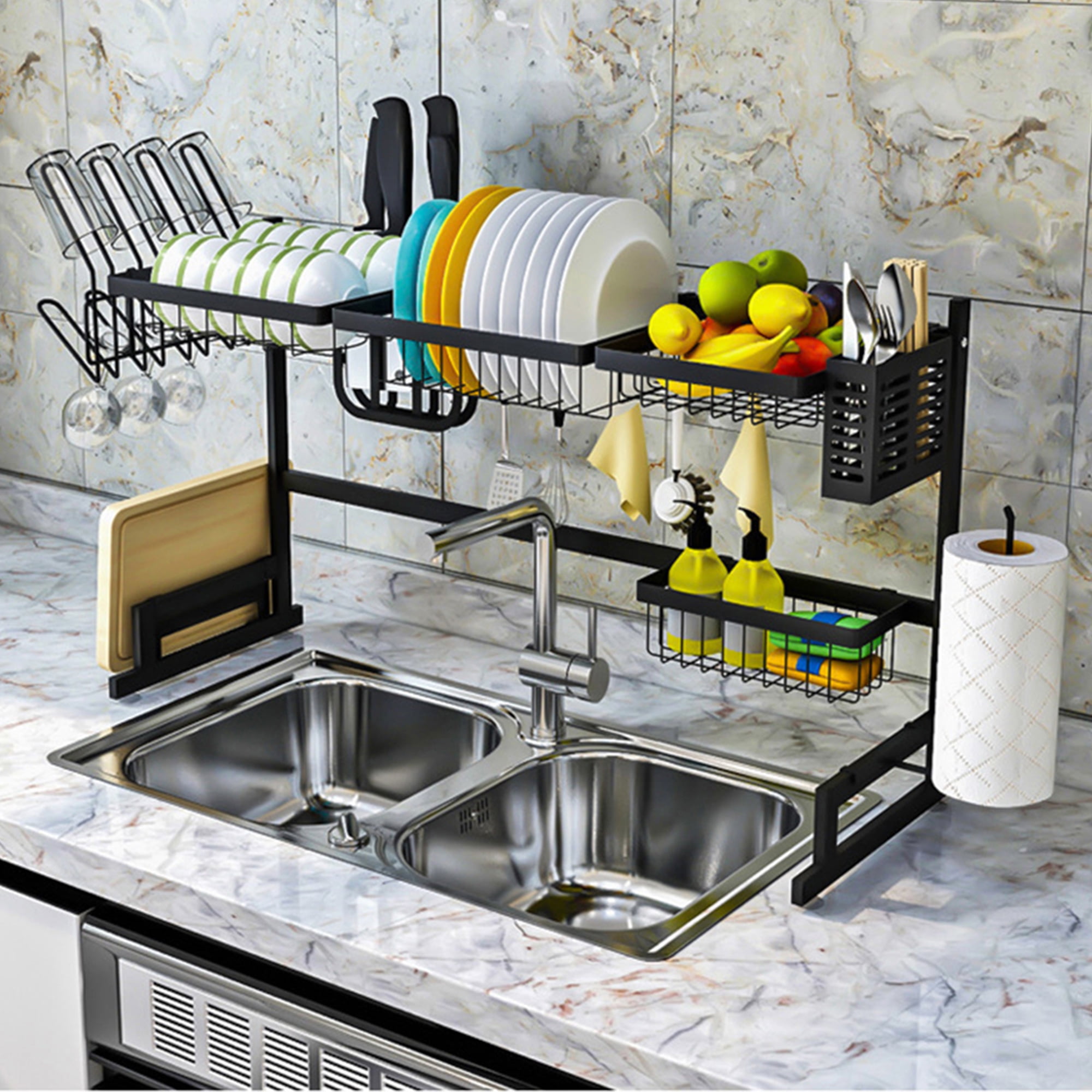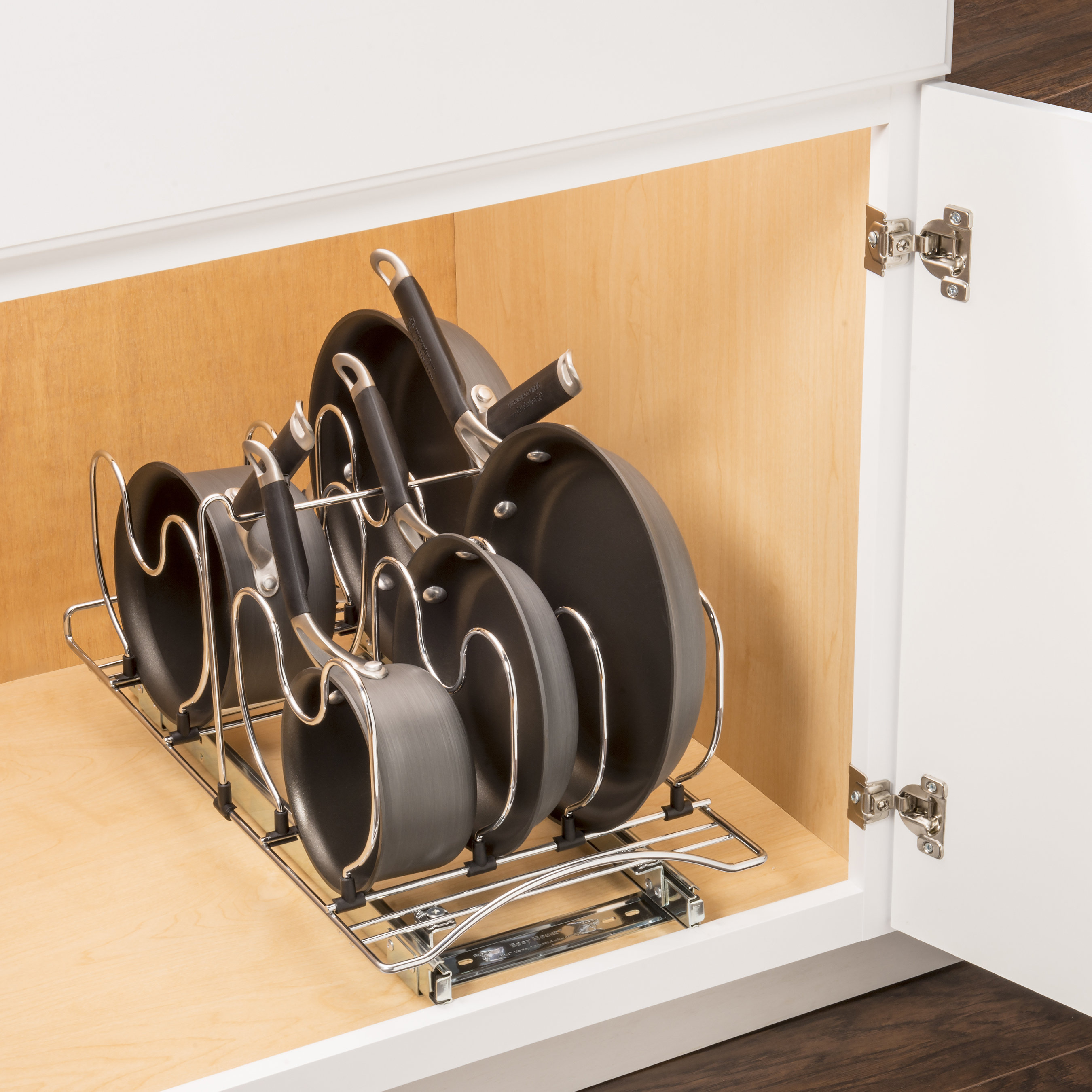Types of Cookware Racks for Cabinets

Efficient cookware storage is crucial for maintaining a well-organized and functional kitchen. Cabinet cookware racks offer a solution for maximizing space and improving accessibility. The selection of an appropriate rack depends on several factors, including cabinet size, cookware type, and personal preferences. This section details the various types of cookware racks available, considering their materials, designs, and installation processes.
Cookware Rack Materials and Their Properties
The choice of material significantly impacts the durability, aesthetics, and cost of a cookware rack. Common materials include wood, metal, and plastic, each possessing distinct advantages and disadvantages.
Cookware rack for cabinets – Wood racks offer a classic and aesthetically pleasing option. They often blend well with traditional kitchen designs. However, wood is susceptible to moisture damage and requires regular maintenance to prevent warping or rotting. Hardwoods like oak or maple are more durable but also more expensive than softer woods such as pine.
Metal racks, typically constructed from steel or aluminum, are highly durable and resistant to moisture. Steel racks provide exceptional strength, while aluminum offers a lighter weight alternative. However, metal racks can be susceptible to rust or corrosion if not properly treated and can be more expensive than plastic options. Powder-coated finishes enhance durability and aesthetics.
Plastic racks are the most affordable option and are lightweight and easy to clean. However, they are generally less durable than wood or metal racks and may not be suitable for heavier cookware. The plastic’s strength and longevity vary considerably depending on the type of plastic used. High-quality plastics offer better durability and resistance to cracking.
Cookware Rack Designs and Features, Cookware rack for cabinets
Several designs cater to different cabinet configurations and storage needs. Over-the-door racks, under-shelf racks, drawer organizers, and pull-out racks each offer unique advantages and disadvantages.
Over-the-door racks utilize the often-unused interior space of cabinet doors. These racks typically consist of a series of hooks or slots for hanging pots, pans, and lids. They are ideal for smaller kitchens or cabinets with limited space. However, they may not be suitable for all cabinet doors, and the weight capacity is often limited.
Under-shelf racks maximize space by utilizing the area beneath existing shelves. These racks are typically adjustable to fit various shelf heights and can accommodate a range of cookware sizes. They provide a stable and accessible storage solution but require sufficient clearance beneath the shelf. Examples include wire racks or tiered shelf dividers.
Drawer organizers are designed to fit within existing kitchen drawers, transforming them into efficient cookware storage compartments. These organizers typically consist of adjustable dividers that can be customized to accommodate various pot and pan sizes. They offer convenient access but require drawers of sufficient depth and width. Examples include bamboo or plastic drawer dividers.
Pull-out racks are installed within cabinets and slide out smoothly, providing easy access to cookware stored in the back of the cabinet. These racks are often custom-made to fit specific cabinet dimensions and are generally more expensive than other types of racks. They provide excellent organization and accessibility, particularly beneficial for heavier cookware. Examples include those with multiple tiers or specialized slots for specific items.
Installation Processes for Different Cookware Racks
The installation process varies depending on the type of rack and the cabinet design. The following details the installation of three common types: over-the-door, under-shelf, and pull-out racks.
Over-the-door rack installation typically involves simply hanging the rack over the inside of the cabinet door. No tools are usually required, making this the simplest installation. However, ensure the door can support the weight of the cookware.
Under-shelf rack installation usually involves attaching the rack to the underside of a shelf using screws or adhesive clips. A screwdriver and possibly a drill (for pre-drilling pilot holes) might be necessary. Ensure the shelf is strong enough to support the combined weight of the shelf and the rack and its contents. Consider using stronger screws for heavier racks and shelves made of less dense materials.
Pull-out rack installation is the most complex, often requiring precise measurements and potentially woodworking skills. This usually involves attaching mounting brackets to the cabinet sides and then attaching the rack to the brackets. Tools may include a drill, screwdriver, measuring tape, level, and possibly a saw for adjusting the rack to fit the cabinet. Cabinet type (e.g., framed vs. frameless) significantly impacts the installation process. Consulting professional installation instructions is recommended.
| Rack Type | Tools Required | Installation Difficulty | Estimated Installation Time |
|---|---|---|---|
| Over-the-door | None | Easy | 5 minutes |
| Under-shelf | Screwdriver, possibly drill | Medium | 15-30 minutes |
| Pull-out | Drill, screwdriver, measuring tape, level, possibly saw | Difficult | 1-2 hours |
Choosing the Right Cookware Rack: Cookware Rack For Cabinets

Selecting the appropriate cookware rack for cabinet storage requires careful consideration of several key factors to ensure both efficient organization and the longevity of your cabinetry and cookware. A poorly chosen rack can lead to instability, damage, and ultimately, inconvenience. This section will Artikel the critical aspects to consider before purchasing a rack.
Factors Influencing Cookware Rack Selection
The choice of a cookware rack hinges on several interdependent factors. Failing to account for these can result in an ill-fitting or inadequate storage solution. A systematic approach to selection is crucial.
- Cabinet Dimensions: Accurate measurement of the available cabinet space (height, width, and depth) is paramount. The rack must fit snugly without impeding door closure or obstructing other items.
- Cookware Type and Size: Consider the size and shape of your pots, pans, and lids. A rack designed for smaller items may not accommodate larger cookware, and vice versa. The material of your cookware (cast iron, stainless steel, non-stick) might also influence your choice of rack material to avoid scratching.
- Desired Storage Capacity: Determine the number of pieces of cookware you need to store. Select a rack with sufficient capacity to hold all your items without overcrowding.
- Weight Capacity: The rack’s weight capacity must exceed the combined weight of your cookware to prevent sagging, bending, or even collapse. This is particularly crucial for heavier cookware such as cast iron.
- Material and Construction: The rack’s material (wood, metal, etc.) should be durable and resistant to moisture and temperature fluctuations within the cabinet. The construction should be sturdy enough to support the weight of the cookware.
- Accessibility and Organization: Consider how easily you can access your cookware. A well-designed rack facilitates easy retrieval of items without causing a cascade effect.
Weight Capacity Considerations
Exceeding a cookware rack’s weight limit poses significant risks. The rack may bend or break, potentially damaging the cabinet itself. Heavier cookware, such as cast iron skillets, can cause excessive stress on the rack’s structure, leading to instability and the risk of the rack collapsing and causing damage to both the rack and the cabinets. For example, a rack with a 20-pound weight limit overloaded with 30 pounds of cast iron cookware could result in the rack bending, breaking, or pulling away from the cabinet’s mounting points, potentially damaging the cabinet doors or shelves.
Cookware Rack Selection Based on Kitchen Style
The aesthetic of your kitchen should inform your choice of cookware rack. Different styles demand different design approaches to maintain visual harmony.
- Modern Kitchen: Imagine a sleek, stainless steel rack with a minimalist design. The rack is characterized by clean lines, a brushed finish, and perhaps a slightly industrial feel. It is seamlessly integrated into the cabinetry, enhancing the overall modern aesthetic. The image shows a simple, geometric design, possibly with vertical dividers to separate cookware neatly.
- Rustic Kitchen: Picture a sturdy, wooden rack crafted from reclaimed wood, perhaps with a slightly distressed finish. The rack’s design is more organic and less structured, possibly featuring curved lines or a more natural, unfinished look. The image depicts a rustic, handcrafted rack with visible wood grain and perhaps some metal accents, blending seamlessly with the warmth of a farmhouse-style kitchen.
- Traditional Kitchen: Envision an elegant, possibly ornate, rack made from dark wood or painted to match the cabinetry. The design might incorporate decorative elements or be crafted with a more classical, detailed aesthetic. The image showcases a rack with a more classical, perhaps even slightly antique-looking, design, perhaps with decorative molding or carvings, perfectly complementing a traditional kitchen’s ambiance.
